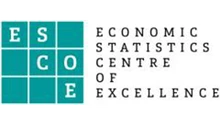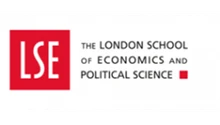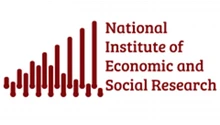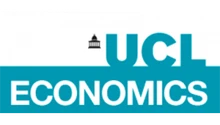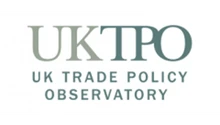The development of new technology is at the heart of economic growth. But the ways in which new products and processes spread around the world are vulnerable to changes in trade policy, with growing protectionism likely to constrain progress.
Research indicates that the time taken from first use to widespread usage of a new technology can be very long – sometimes decades. In the context of global markets, there are several forces, as well as government policies, that shape these patterns of technology ‘diffusion’ and their effects on the wider economy.
Technological change comes in many forms. It can include new products (involving either changed functionality or, especially in cultural industries, aesthetic changes), as well as the use of new processes of production, new raw materials, new management methods or new organisational forms. Such developments are widely considered to be the engine of long-term productivity growth.
Based on the theory set out by Joseph Schumpeter in the early 20th century, this process consists of three interrelated parts:
- Invention: the generation of new ideas – which may be undertaken by firms, individuals or publicly funded research establishments.
- Innovation: turning these ideas into marketable products and processes – which is largely the remit of firms.
- Diffusion: the spreading of new technologies across potential users – which may be individuals or firms (see here for details).
The third stage is critical. Although the invention and innovation stages, and their associated expenditures (often labelled as research and development, or ‘R&D’), tend to get the most attention in policy discussions, it is only as new technologies spread that their economic benefits are felt.
The extent of use or ownership of new technologies over time tends to follow an S-shaped curve. That is, if current usage as a proportion of final usage is plotted over time, it starts low, then grows initially at an increasing rate until a point of inflection after which growth slows until the limit is reached.
This pattern tends to apply to all new technologies (products or processes), and can be observed at the global, country, industry, firm and household level. The period from first use to final use differs across technologies and can vary from a few months to many years. Similarly, the point where the product or service is fully distributed across the market (known as the saturation point) can also vary.
Figures 1, 2 and 3 illustrate typical diffusion patterns within and across countries. Figure 1 illustrates the use of several different technologies in US households over the period from 1900 to 2016. Figure 2 shows the share of the population in different global regions using the internet over the period from 1990 to 2024. Figure 3 plots the uptake of electric vehicles in the UK between 1994 and 2024.
Figure 1: Share of US households using specific technologies, 1900-2016
Source: Our World in Data, first seen in BlackRock, 2014.
Figure 2: Share of populations using the internet, 1990-2024
Source: International Telecommunication Union (2025).
Figure 3: Electric vehicles in the United Kingdom by fuel type, 1994-2024
Sources: Authors' elaboration of Department for Transport, Driver and Vehicle Licensing Agency data.
The drivers of diffusion
There are two main drivers of the diffusion process. The first is based on the argument that at any point in time, usage of new technologies is limited by different potential users’ lack of knowledge about the new idea (these people and firms also have varying attitudes to risk). But usage itself extends knowledge more widely to other potential users – for example, by observation or the movement of employees from one firm to another. As people move around, ideas spread.
This happens in a self-reinforcing way, encouraging further extensions in usage. Crucially, this dynamic can also occur across countries through trade or the movement of people, where the usage experience in one nation ‘spills over’ into better knowledge in other countries. Advertising by technology suppliers and similar activities may also extend knowledge.
The second factor relates to the idea that households and firms will only adopt a new technology if the benefits expected from acquisition exceed the costs of adoption.
For households, this would mean that at any point in time, use will be limited to those who can afford the technology at current prices. Over time, as the price of the new product or service falls, its quality (performance) improves and/or household incomes or willingness to pay increase, more and more people will adopt the technology.
What about firms? For companies that are considering installing a new process or technology, the expected profit from adoption will depend on the number of other competing firms that have already started using it (including internationally, if the firm operates within global markets).
The increased competitiveness of early adopters will tend to lead to lower prices in the market for the output of potential adopters, reducing the gains to later potential adopters, limiting or slowing their adoption as a result. Adoption will then only extend further as the cost of installation falls or the quality of the new technology improves.
Figure 4 shows an example of reductions in the costs of new technologies over time, highlighting the dramatic fall in the real cost of computer memory and storage over time (further examples can be found here). In the space of just a few decades, the cost of computer memory dropped exponentially, from hundreds of trillions of dollars per terabyte in the 1950s to around a thousand dollars per terabyte today.
Figure 4: The price of computer memory and storage. 1956-2023
Sources: McCallum, 2023; US Bureau of Labor Statistics, 2024; Our World in Data.
The supply side: property rights
The pattern of diffusion over time is largely the result of changes in the prices charged for new technologies and improvements in their quality and performance. But these changes will, at least partly, be themselves driven by developments in the industries supplying the new technologies. So, the supply side merits deeper consideration.
Consider a hypothetical scenario where there is one profit-seeking innovator who launches a product that embodies a new technology onto the market. An initial monopoly position allows the firm to charge a high price, enabling larger profits that act as a reward (and incentive) for its activities in the initial development of the new technology.
The prospect of further ‘monopoly profits’ will also be an incentive to develop the new technology further or to reduce its costs of production (extending usage). But in the absence of any market or legal barriers, other firms may be able to compete for the new product by copying the original firm, reducing the innovator’s returns and perhaps their future efforts.
Although such competition may lead to lower prices or improved performance for the new technology (generating more extensive diffusion), the result will be lower returns to the initial supplier. Given this possibility, innovators often employ a range of strategies to try to protect the knowledge embodied in their new technologies from being mimicked. These include having a general culture of secrecy, seeking market dominance, the acquisition of scarce vital inputs or the use of non-disclosure agreements (NDAs) with departing employees.
In addition, being aware of the reduced returns to innovators that copying can produce, and wishing to encourage innovation, many countries have introduced formal legislation on intellectual property rights (IPR) to protect knowledge. These are embodied in patents, copyrights and trademarks, and they give legally enforceable rights to organisations about certain declared bits of knowledge (declaration also has the advantage of resetting the knowledge base for further development by others).
Today, most countries – and, in some cases, groups of countries such as the European Union (EU) – have enforced IPR regimes. The owners of effective IPR certification may be able to determine the price of their products, its advertising and further advances in the technology, controlling, to some degree at least, the pattern of usage of the innovation.
This control will reward inventors’ innovative activity, but it will also tend to make the cost of users’ acquisition of the technology greater, slowing or limiting diffusion as a result. This conflict between the users obtaining the benefits from technological advances (which is the basic reason for their adoption) and the producers of those advances getting a return on their innovation efforts and investments is at the heart of all processes of technological change.
IPR is owned by the registered holder, but it is tradable and can be licensed (the terms of which may also be of relevance). This means that innovations can be embodied into products in territories beyond their country of origin (note that the illegal breaching of IPR will also allow this). In any case, as most IPR frameworks have limited lifetimes (patents tend to last 20-25 years, and literary copyright expires after 70 years, for example), very few new technology suppliers will retain their monopoly position forever.
For example, over time, TV manufacturing moved from Europe and the United States to East Asia, and car manufacturing has similarly shifted eastwards (see Table 1). In both cases, this established new economic activities or industries away from the technology’s country of origin. Such changes in the number of suppliers and the cost base in their new locations also tend to lead to lower prices and more extended diffusion.
Table 1: List of countries by percentage of world motor vehicle production
| 2023 | 2020 | 2010 | 2000 | 1980 | 1960 | |
| China | 32.2 | 32.5 | 23.5 | 3.5 | 0.6 | 0.1 |
| United States | 11.3 | 11.4 | 10.0 | 21.9 | 20.8 | 47.9 |
| Japan | 9.6 | 10.4 | 12.4 | 17.4 | 28.6 | 2.9 |
| India | 6.3 | 4.5 | 4.6 | 1.4 | 0.3 | 0.3 |
| South Korea | 4.5 | 4.5 | 5.5 | 5.3 | 0.3 | 0.0 |
| Germany | 4.4 | 4.8 | 7.6 | 9.5 | 10.1 | 12.5 |
| Mexico | 4.3 | 4.1 | 5.1 | 5.3 | 4.1 | 3.2 |
| Spain | 2.6 | 2.9 | 3.1 | 5.2 | 3.1 | 0.4 |
| Brazil | 2.5 | 2.6 | 4.4 | 2.9 | 3.0 | 0.8 |
| Thailand | 2.0 | 1.8 | 2.1 | 0.7 | 0.2 | 0.0 |
| Canada | 1.7 | 1.8 | 2.7 | 5.1 | 3.6 | 2.4 |
| France | 1.6 | 1.7 | 2.9 | 5.7 | 8.8 | 8.3 |
| Turkey | 1.6 | 1.7 | 1.4 | 0.7 | 0.1 | 0.0 |
| Others | 15.4 | 15.3 | 14.7 | 15.4 | 16.4 | 21.2 |
| World (number of cars) | 93,546,599 | 77,621,582 | 77,629,127 | 58,374,162 | 38,564,516 | 16,488,340 |
Source: Authors' calculations using data found on Wikipedia.
Diffusion policy
In some cases, policy-makers need to step in. If markets will not produce a desirable outcome, then governments may wish to speed up – or, in rare cases, slow down – diffusion. Several policy frameworks and tools are available to do so.
On the supply side, technology-related policies related primarily to invention and innovation may have spin-offs that speed up diffusion. For example, most governments have policies that underwrite the innovation system in their economy. This tends to encompass university education and research, skills creation, the availability of finance for risky projects and start-ups, and (as previously discussed) IPRs.
In addition, there are other more specific policies directed at R&D and innovation in certain industries that may lead to faster improvements in new technologies or lower prices that may stimulate use. All of these supply-side policies may also have ‘exhibition effects’ (that is, boosting awareness), further stimulating diffusion.
On the demand side, policy-makers may introduce more specific diffusion-directed legislation. These can include:
- Banning the use of older technologies, such as stopping the sale of new diesel or petrol cars.
- Providing subsidies for the use of new technologies, such as computers for schools or heat pumps for homes. This not only makes the new technologies cheaper, but if undertaken early in the diffusion process, it may also have a further impact by stimulating knowledge about the new technology.
- Undertaking information-spreading activities, sometimes called ‘outreach’ or ‘extension’ activities.
- Intervening to help to overcome incompatibilities in national and international ‘standards’ between different versions of a new technology.
In each case, the goal for policy-makers is to ensure that both firms and consumers are aware of new technologies and can adopt them in a cost-effective way.
The trading environment
At the time of writing, the global economy is being shaken by US president Donald Trump’s attempts to change his country’s longstanding trade policy. The administration is using tariffs to encourage the return of production activities (especially in manufacturing) to the United States after a long process of such activities being established overseas (in China, in particular).
Other countries will be considering similar initiatives in response. These policies could well affect the location of facilities producing products embodying new technologies. How this will affect diffusion is not yet clear.
If, as seems likely, these changes lead to the production of products embodying new technologies being relocated to higher-cost locations (like the United States), then this approach is likely to slow the diffusion of technology in most countries. Higher import costs – via the tariffs – could compound this issue, curbing the spread of ideas.
A related strategy known as technological decoupling is also being considered in some economies. This process involves nations seeking to develop independent capabilities in critical technologies to reduce their reliance on other countries.
One current example in the UK is steel production. Others include the blockage of the Chinese telecoms company Huawei’s supply of critical communications infrastructure, and the EU’s effort to bring back microprocessor production to Europe. Again, this is likely to shift production to higher-cost locations and involve import tariffs. Such an approach could have a negative impact on the diffusion of affected technologies, potentially slowing productivity growth.
Where can I find out more?
- Economic consequences of US-China technological decoupling: An illustrative quantitative analysis: A VoxEU column by Naoto Jinji and Shunya Ozawa.
- New technologies and trade: An article published by the OECD on the relationship between new technology and trade.
- Intersecting Paths: Advances in technology affect trade and vice versa: An article published by the International Monetary Fund (IMF).
Who are experts on this topic?
- Giuliana Battisti
- Nick Bloom
- Josh Lerner
- Paul Stoneman









